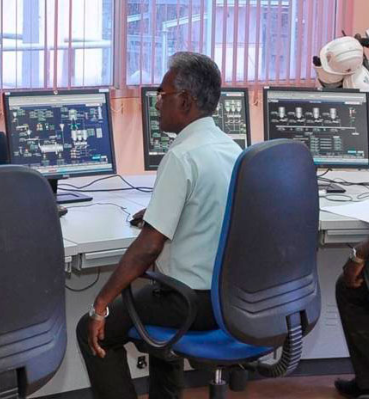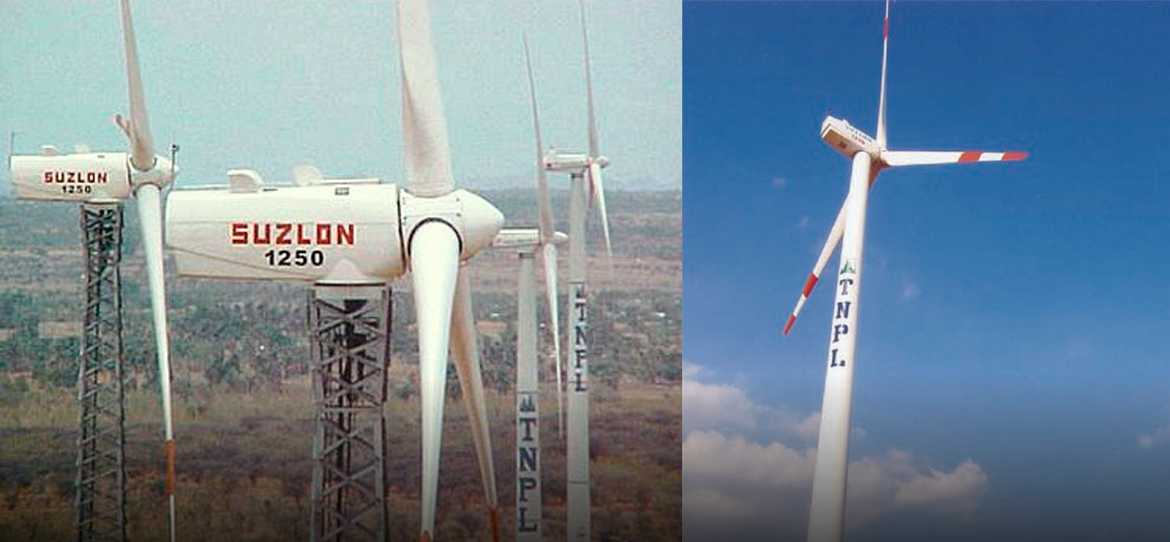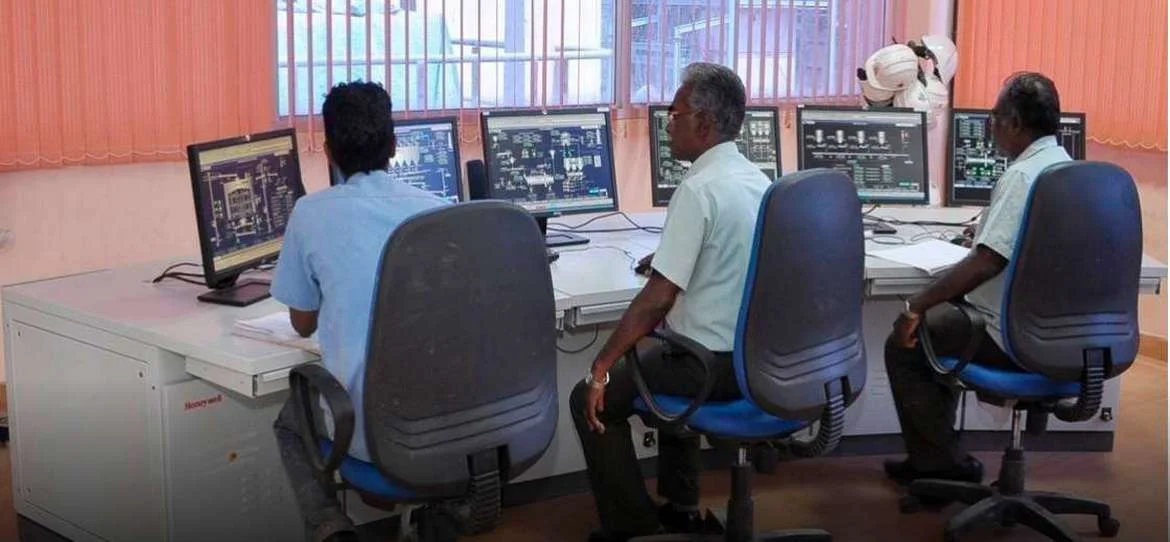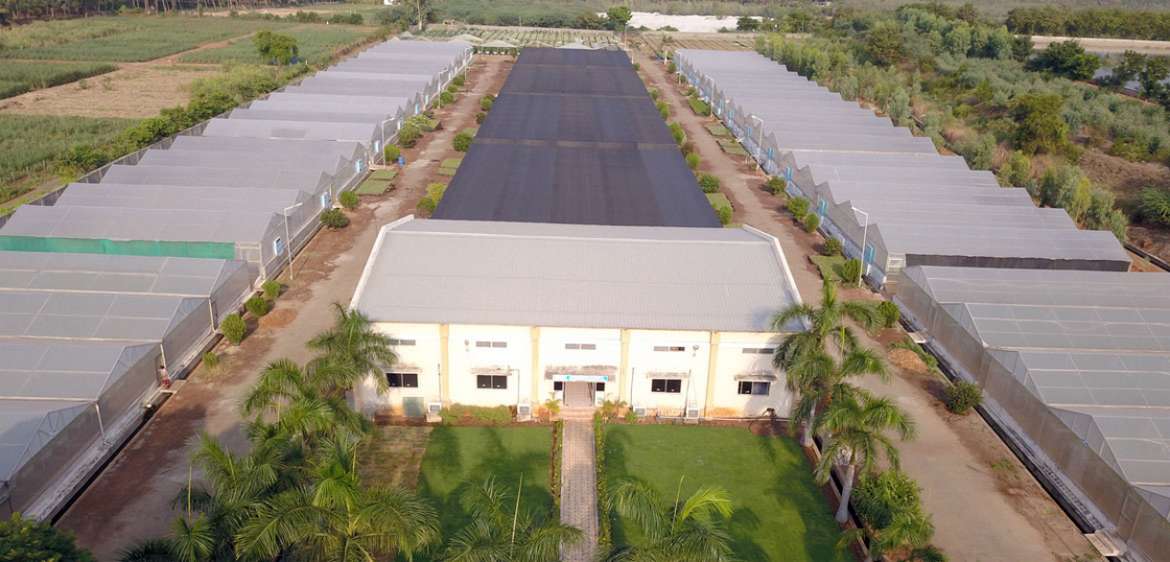
Green Energy
At TNPL, we are a responsible organization committed to preserving our ecosystem and reducing our carbon footprint. We have ventured into generation of green energy through Renewable Energy resources and have installed a 15 MW Wind Farms at Devarkulam and Perungudi in Thirunelveli District in FY 1993-94. Through the years, after carrying out capacity additions in four phases in Devarkulam, the plant’s current capacity stands at 35.5 MW.
Over 1,100 Acres of Land to Generate Clean, Renewable Energy
- Our Devarkulam Wind Farm is located in the heart of Shenkottah Pass which receives seasonal winds during the South-West monsoon season from May to September.
- Our Perungudi farm is located in the Muppandal Pass and receives wind both during the South-West from May to September and the North-East Monsoon from December – January.
- The totality of our farms consist of 905 acres of land in Devarkulam farm and 217 acres of land in the Perungudi farm, which includes 77 acres of Govt. unassessed lands under lease.
Subsidized rates to facilitate uninterrupted power In villages
On an average, TNPL generates about 4.16 crore units per annum with the current capacity of our wind farms. 0.75 MW out of the 3 MW power generated at our Phase – II wind farm is adjusted against the power consumed in our Chennai Corporate office, while 1.25 MW out of 6.25 MW power generated at our Phase – IV wind farm is adjusted against the power consumed at our Perugamani Water Head Works, Trichy.
The energy generated from Phase I – IV is being sold to TNEB at the rate of Rs. 2.75/unit, whereas for Phase V, TNEB offers Rs. 2.90/unit based on its date of commissioning.
Staying true to our carbon-neutral mantra – Clean Development Mechanism (CDM)
1,90,920 Certified Emission Reductions have been recognized for energy production without emitting any carbon from the wind farms under CDM.
Deploying LT Rooftop Solar Power Plants at Windfarms
In our persistent efforts to pursue technological advancements in the Renewable Energy Industry, a 3 KW Low Tension Solar Power Plant was installed in November 2015 in both our wind farms in order to reduce our LT consumption bills.
Cultivating captive plantations to transport more than 2,000 Tons of EH Pulpwood
To utilize the unused lands available between the erected Wind Electric Generators in Devarkulam, our plantation department has taken up planting eucalyptus in about 275 acres of land. Besides that, so far about 2,300 Tons of EH pulpwood has been transported to Unit I from the captive plantation.

Resources


Circular Economy
Redefining sustainability by adopting a circular economy
At TNPL, a regenerative system is followed in which resource input, waste, emission and energy requirements are minimized by narrowing and closing energy and material loops. This is achieved through long-lasting design, maintenance, reusing, remanufacturing, refurbishing and stringent recycling.
Being the torch-bearers of sustainability and circular economy, we strive to make sure that almost no waste from any process is disposed of without making sure that they cannot be used for any other operation. We are firm believers that waste from one process could be the fuel to another. So, we optimize and utilize all the waste generated from our paper, paperboard and cement plants and ensure that it is repurposed at all levels. This makes us enhance operational efficiency and promote greener energy, which further aids in better resource planning and product-life extension.
It is a known fact that the major raw material for our paper manufacturing is bagasse – which is a residue that is obtained from sugarcane. But, there is more to it than meets the eye.
Restricting 45,000 MT of CO2 from getting released into the atmosphere
The wash water from the bagasse store yard is processed in the bagasse clarifier and then treated in a bio-methanation plant to generate biogas. The obtained biogas is then used in the lime kiln as a replacement for furnace oil in the paper mill, aiding in reduced pollution. Also, this is the first registered Clean Development Project from pulp paper industry and reduces around 45,000 MT of CO2 equivalents per year.
Generating Biofuel from Bagasse and Wood
The pith from bagasse and wood dust from wood are repurposed to generate biofuel, which is then fired in the boiler to replace fossil fuels. This serves as an energy-efficient and non-hazardous fuel in the paper mill.
Converting Waste into High-Grade Cement
The lime sludge that is generated from the caustizer process in Soda Recovery Plant, the fly ash obtained from the Power boiler, lime grit, bed ash rejects, and colour coating kitchen sludge from Unit II are reused to manufacture cement of top-notch quality.
Repurposing the Flue Gas from Cement Process
The flue gas that is a byproduct of the cement mill, instead of getting released into the atmosphere, is utilized for fuel drying in the coal mill and lime sludge drying, which is paramount in the functioning of our paper mill. It is also used to heat the raw materials in the manufacturing of TNPL’s cement.
Reusing the Caustic Waste
The caustic waste generated from the caustic boil-out in the paper machine is collected separately and reused as the makeup chemical in the Soda Recovery Plant, which is a prominent factor that aids in the functioning of our turbo generator, facilitating power to the entire plant.
Reducing the process water usage
The process condensate and vacuum pump seal water obtained from Soda Recovery Plant are reused in various stages of Pulp Mill as an alternative source of process water.
Treating the effluents from Paper Machine Plant
The effluents that emanate from the paper machine are repurposed in the back water system of Chemical bagasse plant.
Steam Generation from Black Liquor
After the pulping of wood and bagasse, the organic waste material, lignin, is extracted as black liquor. The black liquor is repurposed in the Soda Recovery Plant to produce steam, which is then used in the turbo generator as a replacement for fossil fuel, generating power in a much economical, sustainable and environment-friendly way.
Resources
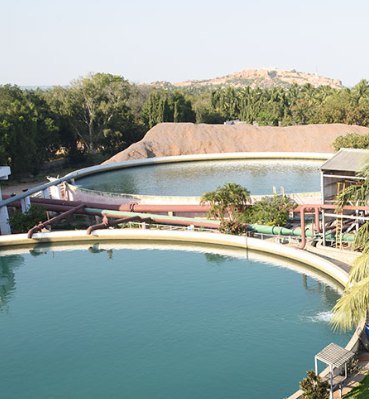
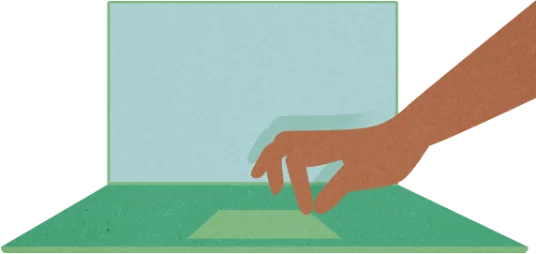
IT Landscape
Adopting digital transformation
in the new-normal
With the ever-changing advancements in the digital landscape, and TNPL, being the torch-bearers of innovation and collaboration, has deployed state-of-the-art digital technology that caters across different departments.
Exploring the digital advancements at
all levels at TNPL
Production
Total Automation deployed to plan year-long productions
AT TNPL, we have a robust methodology to understand consumption & production details, and compare the actual performance and the Annual Operating Plan in terms of production output, raw materials and variable costs through our ERP system. Sophisticated software is also installed to closely monitor treated effluents, emissions and ambient air.
Further, in future, we plan to adopt variable cost control by optimized use of raw materials, optimize output quality through ERP-Control System integration, and put big data to use.
Marketing
Complete digitization of our Dealer Platform
The integration of the software with ERP enables our dealers to place orders, match receipts to invoices, raise complaints and much more. Integrations with GSTN and NIC servers also automate e-invoicing and e-bill generations. The Export Management Module of ERP and Treasury software tracks every activity pertaining to exports.
In future, we plan to deploy Deckle Optimization Software for reduced finishing losses and implement software for automatic despatch planning and conversion
Procurement
Streamlining TNPL’s Supply Chain Digitally
Our robust systems also enable internal controls for both domestic and international procurements. E-tendering and E-auction software integrations are implemented to achieve more than 90% end-to-end procurement. Further, the pulpwood supply chain – right from pre-planting stage to harvest and procurement are managed through a single mobile app.
Finance
Automations from cash flow management to GST returns
The ERP system stretches further into cash flow management, treasury operations and financial reporting. It is also integrated with the GSTN server to automate GST returns filing for statutory compliance.
The next in the pipeline, we plan to implement a planning software for Annual Operation Planning, automate supplier payments and treasury operations through integrations with the bank’s CMS software.
Human Resource Management
Enabling Artificial Intelligence for attendance management
An AI-enabled attendance management software is deployed to track our contract workers’ data and attendance. Our recruitment process has also turned online to pick and choose the perfect talent for our organization. Further, the current paper-based employee appraisal system is soon to be migrated into a software to avoid subjectivity and maintain confidentiality of data.
Data Center Infrastructure
Robust servers with State-of-the-Art Disaster-Proof Back Up Solutions
Modernized in 2019, we boast the latest servers with SAN storage and backup solutions. Also, a full-fledged Disaster Recovery (DR) data center is set up to make sure of the availability of the mission-critical ERP system.
